Navigating the Compliance Maze: What Building Owners Need to Know
February 18, 2025
As the world grapples with climate change, energy efficiency has become a cornerstone of sustainability in the real estate sector.
Regulations aimed at reducing greenhouse gas emissions are increasingly stringent, and building owners face mounting pressure to comply. However, navigating the complex landscape of energy standards can feel like a daunting maze.
This article provides a comprehensive guide to help building owners better understand energy compliance requirements to leverage them for long-term benefits.
The Growing Importance of Energy Compliance
Energy standards are no longer optional. They are driven by global sustainability goals, such as the Paris Agreement, which mandates significant reductions in carbon emissions. In North America, initiatives like Canada’s Green Buildings Strategy and the United States' Local Law 97 underscore the urgency of improving building efficiency. For building owners, compliance is about more than avoiding penalties—it offers financial benefits, including reduced operational costs, tax incentives, and enhanced property value. Additionally, energy-efficient buildings are increasingly sought after by tenants and investors, making compliance a competitive advantage.
Key Energy Standards Building Owners Need to Know
Understanding the standards is the first step toward compliance. Below are the key frameworks and tools that guide energy performance for buildings:
1 - Benchmarking and Reporting Programs
Tools like ENERGY STAR Portfolio Manager allow building owners to measure and monitor energy performance. For example, New York City's Local Law 97 mandates regular reporting and sets serious penalties for buildings that fail to meet specific carbon emission thresholds.
2 - Performance-Based Standards
Regulations like ASHRAE 90.1, Title 24 (California), and the International Energy Conservation Code (IECC) establish minimum energy efficiency requirements for buildings. These standards often serve as benchmarks for new construction and major renovations.
3 - Green Building Certifications
Certifications such as LEED, BREEAM, and WELL Building Standards demonstrate a building's commitment to sustainability. These labels not only improve marketability but also offer financial incentives in some regions. Sound management decisions should focus on ensuring consultant fees deliver lasting benefits, outweighing potential recurring costs..
4 - Emerging Regulations
Evolving requirements, including carbon-neutral building mandates, are reshaping the compliance landscape. Staying ahead of these changes can help building owners prepare proactively.
Challenges in Achieving Compliance
Compliance with energy standards is not without challenges. Many building owners struggle to navigate the complexities of varying regional and international requirements. Additionally, the costs associated with retrofitting older buildings can be substantial. Another significant hurdle is monitoring energy use effectively. Data collection is critical for compliance but often requires advanced tools and expertise. Finally, as regulations evolve, building owners must remain agile and adapt to new standards and technologies.
Challenges in Avoiding Compliance
In the context of Commercial and Industrial (C&I) buildings in France, the Tertiary Decree requires a progressive reduction in energy consumption for properties such as offices, retail spaces, and professional premises. Failure to comply with reporting obligations on the OPERAT platform can result in several consequences for building owners, including legal orders to comply, recurrent penalties of up to €1,500 for individuals and €7,500 for legal entities, public disclosures that can severely damage reputations, and challenges in recruiting and retaining responsible employees. These regulatory conditions are likely to evolve globally, driving landlords to act while fostering long-term value creation within their respective countries.
In New York city when John purchased a 50,000-square-foot commercial building in Manhattan, he dismissed warnings about Local Law 97 compliance. "We'll deal with it later," he told his property manager. In 2025, John's building exceeded carbon emissions limits and failed to submit required energy reports. The Department of Buildings (DOB) fined him $0.50 per square foot per month for delayed reporting. After six months, John's non-compliance penalty totaled $150,000 — more than the cost of hiring an energy consultant to ensure compliance in the first place.
Prioritizing energy upgrades goes beyond compliance, realizing proactive action is far cheaper than paying fines year over year with severe reputational damages causing even bigger issues.
Simplifying the Compliance Process
While the challenges are real, strategic planning can make compliance more manageable.
1 - Conduct Energy Audits
An energy audit provides a baseline at Time-0 to characterize the current building performance, identifying efficiency gaps and opportunities for improvement.
2 - Leverage Expertise
Partnering with qualified experts and using digital compliance technologies simplifies the process. Experts can help interpret complex regulations and identify efficient roadmaps.
3 - Take Advantage of Incentives
Governments and utilities offer financial incentives such as grants, tax credits, and low-interest loans to offset the costs of energy upgrades. For instance, programs in Canada and the U.S. provide subsidies for retrofitting projects. A caveat not to miss is the total cost of ownership before jumping on appealing incentives – comparing cash outflow and inflow is fundamental.
4 - Implement Incremental Changes
Managing progressive roadmaps is highly recommended to avoid vendor traps, particularly those focused on selling products or services rather than delivering solution-driven, tangible outcomes. For older buildings, phased upgrades can help spread costs over time while meeting compliance milestones.
Learning from Real-World Success
Successful case studies provide a blueprint for navigating energy compliance. For example, Manitoba Hydro Place in Winnipeg is a model of sustainable building design. The 22-story tower uses geothermal heating and cooling, a high-performance envelope, and a solar chimney to reduce energy consumption by over 60%.

source : KMPB.com
In the United States, six iconic Manhattan buildings recently achieved compliance with Local Law 97 through energy efficiency upgrades. Supported by incentives from Con Edison, these projects collectively reduced carbon emissions by over 3,600 metric tons annually.
The Future of Energy Compliance
The future of energy compliance lies in technology and innovation. Smart building systems and AI are transforming energy management, making it easier to track performance and identify areas for improvement. Policy trends also indicate a shift toward stricter requirements, such as net-zero carbon mandates. Building owners who embrace these changes early will be better positioned to adapt and thrive.
Conclusion
Energy compliance is no longer just a regulatory requirement—it’s a strategic opportunity to attract the best talents, to increase customer mindshare, to leave competitors in the dust., and to create unprecedented financial value for responsible shareholders. All wins!
Compliance isn't always easy, especially if you're trying to manage it all on your own. But by partnering with technology solution providers, you'll be amazed at the gains you can achieve in just a few months.
By understanding the standards, addressing challenges, and adopting a phased, expert-driven approach, building owners can navigate the compliance maze with confidence. Beyond meeting legal obligations, energy-efficient buildings offer reduced costs, increased real estate value, and a positive environmental impact.
Now is the time to act—waiting is not a strategy. Begin with an energy audit, leverage available incentives, and follow a structured roadmap: analyze, plan, and optimize. This approach will not only ensure compliance but also position you as a leader in corporate sustainability.
References:
- The Global Regulations Radar, 2nd Edition (2025)
- Passive House Institute US (PHIUS). (2024). The future of Passive House design in North America. New York Post.
- TIME Magazine. (2024). How AI is making buildings more energy-efficient.
- Canada Green Building Council. (n.d.). Green Building Spotlight.
- Natural Resources Canada. (2024, October). Piloting New Ways to Make Homes More Energy-Efficient and Affordable.
- Natural Resources Canada. (n.d.). Energy Efficient Buildings RD&D.
- Efficiency Canada. (2024, July). What’s in the Canada Green Buildings Strategy.
- Canadian Climate Institute. (n.d.). The Future of Building Heat.
- Natural Resources Canada. (n.d.). Energy Efficiency in New Buildings.
- Fraser Institute. (2023). Wrong Move at the Wrong Time: Economic Impacts of the New Federal Building Energy Efficiency Mandates.

